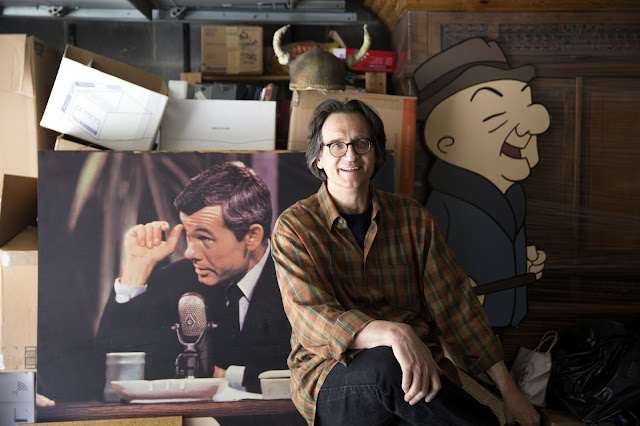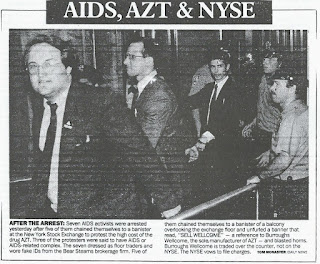Every time a celebrity dies, there's a flurry of social media posts and blogs and newspaper remembrances about the writer's encounter the the celebrity, which of course usually comes off as more about the writer than the recently deceased.
This might be one of those. But it's really not about David Crosby, who died today, but the guy who'd introduced me to Crosby -- Bob Timmins, who Crosby credited with helping keep him sober.
 |
| Timmins with Crosby in Timmins' office, by Max Aguilera-Hellweg |
"If you look in Timmins's eyes," Crosby told me, "you can see he's been through it. He understands screwups. He doesn't stand in judgment of you-but he doesn't lie to you about what's going on."
 |
| Mars, Sixx, Neil, Lee shot by EJ Camp |
I had met Bob in 1987, when I was on the road with Motley Crue for Rolling Stone. He had been hired by management as a kind of sober minder for Vince Neil, who in 1984 had killed his passenger, the drummer from the band Hanoi Rocks Nicholas "Razzle" Dingley, and severely injured two women, in a DUI car crash.
Neil had been charged with vehicular manslaughter and driving under the influence. He served only half of a 30-day jail sentence, paid $2.6m in restitution, had to perform 200 hours of community service, and received 5 year's probation.
 |
| Vince's deadly car |
Timmins was part of this probation, kind of an unofficial gutter guard. Walking around backstage with an inocuous "Security" pass, he was instantly interesting to me -- indeed, more interesting than the band I was there to interview.
His eyes were haunted, his arms were fully tattooed, he looked like a biker, but he was as gentle and calm as the Dalai Lama. He had clearly seen it all - and his experience gave him power with rockers who normally wouldn't listen to someone.
Turned out, he had grown up in El Monte, California, the son of a law enforcement agent. At 9, he witnessed his mother kill and mutilate a neighbor, after which she was institutionalized. At 12, he started drinking, and by ninth grade, he had dropped out of school. He picked up a heroin habit, began stealing to buy drugs, and eventually did time in San Quentin and other prisons.
I knew Bob's story was worth telling, but for whatever reason, I couldn't get Rolling Stone editor Jann Wenner interested. So after I went freelance in 1990, it was one of the first stories I pitched, and my GQ editor signed on.
Remember - this was years before "Intervention" was a popular cable TV show, before Twitter confessionals. Drug use was still very much not talked about.
Yet Aerosmith's Steven Tyler was among many who surprised me by agreeing to talk for the story. "Bob Timmins" Tyler told me, "is directly responsible for a lot of my friends' being alive today."
Among others quoted in the article: Harry Nillson - who Timmins had only recerntly helped get sober after 20 years, and who called his 12-step meetings "the highlight of my life" -- Doug Fieger of the Knack, actor Corey Feldman, CSNY drummer Dallas Taylor. Among others he helped: Nikki Sixx, Anthony Kiedis, Sly Stone (hey, nobody bats 1.000).
 |
| Tyler, Feldman, Fieger, Nillson, Taylor, Kiedis |
Timmins was not intimidated by star power, partly because, as he told me, “I’m not, like, a rocker guy. I listen to jazz. A lot of times the first time I hear of a group is when I’m called in to meet with them.”
He helped start two recovery centers in 1969 and 1971 while he was still using. Finally in October 1975 he was arrested again, and the judge let him check into one of his own facilities. He had not yet turned 30. "It was a little humbling," he told me, "but it saved my life."
And, after a couple months' sobriety and clarity, he decided to dedicate his life to helping others. Quoting from my piece:
Since then he has lived a workaholic existence, constantly on beeper call [!], out at meetings and clubs until 1:30am, then back in his closet-sized Santa Monica office by 8:30. A widower, he is often out of town - as he was for nine months this past year - and when he returns his desk is piled high with phone messages from such supporters as Paul Newman, Conrad Hilton and Ozzy Osbourne.
He often didn't take money up front, because he didn't want the musicians to mistrust him as being in it for the cash.
Motley Crue's manager Doug Thaler told me, "For a long time, Bob was the ugly demon that came to the door when you were high. The last thing you wanted to see was him coming up the stairs, this Christ figure coming to save you, and you didn't want your soul saved. But I've never seen a more patient man. Even if you cry wolf five times, Bob's still there at the door, ready to pick up the pieces."
 |
| Timmins in March 1991 GQ by Max Aguilera-Hellweg |
"I wanna be fair," Timmins told me. "Sly Stone was very creative on cocaine, but after a while, he lost his ability to do anything. What I try to reinforce is, maybe you did some great stuff on drugs, but see the work people have done since they got clean. Motley Crue never had a number-one record until they got clean, and both of Aerosmith's sober albums [i.e. their two most recent at the time] are they best stuff they've ever done."
So, what became of Bob? I didn't stay in touch with him, though I know a couple of friends he actually counseled on the phone when they were seeking to get sober. I heard some stories over the years, some of them unsavory, that I can't factcheck on deadline (if you know anything with citations, put it in a comment).
What's in the official record is his obituary from the Los Angeles Times, dated March 8, 2008, that actually quotes a bunch from my piece.
It said he died of respiratory failure at his home in Marina Del Rey at age 61 - my age as I write this - having worked the last several years battling chronic obsstructive pulmonary disease (COPD).
It quoted him from my piece as saying he saw all these celebrities "as human beings first. I see them in their pain and try to help them through."
Well, Bob didn't die of drugs, and neither did Nilsson (heart attack), Fieger (cancer), nor Dallas Taylor (complications of kidney disease and viral pneumonia).
Nor did David Crosby, who died today at the ripe old age of 81, who had survived multiple heart attacks, diabetes, hepatitis C, and a liver transplant, in part thanks to the mostly quiet work of Bob Timmins.
"Sometimes," Crosby told me, "it's just a matter of somebody having the right word at the right moment. It's not as if it's a science; it's an art."
 |
| Lincoln Center, August 11, 2019 |



















































